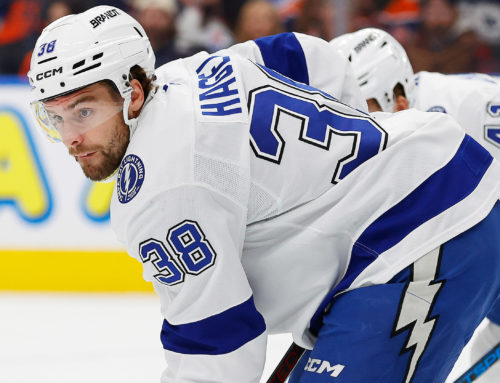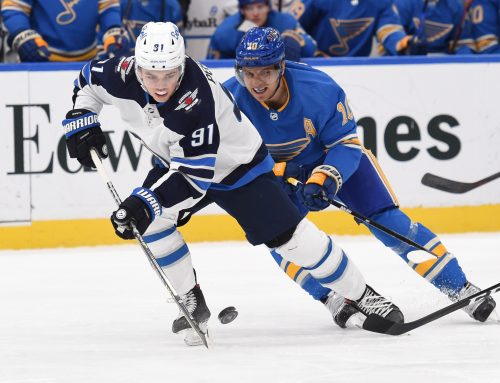After a hiatus for a couple of weeks due to vacation I am returning this week to finish off the playoff coverage. In the previous articles we covered teams that were eliminated in the first two rounds and identified players who seemed like they were on the outs and those who were getting a bigger look. The track record was pretty good as a bunch of the players who seemed to be losing out were subsequently traded or signed elsewhere. This week we are finishing with the final four, so Edmonton, Dallas, Florida, and the New York Rangers.
A quick reminder from those first articles: this series is really focused on the things that changed for the team. It is such a small sample size that we are not going to read too much into point paces, but instead look at how players were utilized in these win-or-go-home series and if that change resulted in anything different on the score sheet or in the underlying numbers. Doing so might give us a bit of insight into how coaches are viewing certain players and who might be primed for a different role next season compared to this one. This is also the playoffs, so to some extent we would assume that a team's top players see a bit of an increase while some depth players might fall off a bit.
And now on to the process. We will be looking at deployment and specifically percent of time on the power-play, and total time on ice. We will be using percent as overtime games can add significant time to a player's overall count without changing that player's real deployment opportunity. In order to get this data, we will be running a Big Board report for the playoffs and comparing that to a second custom Big Board report for the last two months of the regular season. That comparison will tell us which players have gained or lost time between these two samples. Essentially, we are looking at four data points from two different time periods. We have basic scoring data (points per game, and shots per game), then basic time on ice data (percent of the power-play, and total time on ice).
Edmonton Oilers
We are going to start over in Edmonton who suffered a pretty heartbreaking loss in Game 7 after quite the comeback. They totaled 25 games, but on a team level this is probably the least interesting group to talk about. Basically, the top power play all saw big increases in time on ice, most of it made up of an even bigger power-play share than during the regular season. The rest of the team lost out, both on the power play and overall. This team has always been driven by the top of the lineup, and that was just emphasized in this playoff run.
Though the time on ice numbers favored the top power play, Evan Bouchard was really the only player who performed better during the playoffs on the scoresheet. Everyone else on that unit performed a little bit worse.
If we want to talk about the most disappointing performance though I think we need to talk about Darnell Nurse. He was down below 19 minutes a night during the playoffs after seeing almost 22 minutes a night on average during the regular season. This is part of a troubling trend for Nurse where he has consistently been losing ice time for several years. As of 2020-21 Nurse had a little shy of 26 minutes average time on ice for the season. Fast forward a few seasons and the 29-year-old has lost almost seven minutes of time between that peak and this playoff dip.
Trading for Mattias Ekholm and the emergence of Bouchard has clearly hurt Nurse's value. That might not be the full story, as even Cody Ceci saw more time during this playoff run than Nurse. Let's just say the future doesn't look bright for Nurse.
Dallas Stars
Dallas saw 19 games of action, and generally speaking scoring was down compared to the end of the regular season. There are some exceptions. Tyler Seguin and Evgenii Dadonov in particular performed better, but by and large there was just less scoring coming from Dallas players.
The time on ice numbers definitely tell a different story. It was a coming out party for Wyatt Johnston. He has been having a very solid regular season campaign anyway but added three minutes of overall ice time, pushing his total to 20:38 on average he also added almost 12 percent of the team's power-play time. It is by far the biggest jump of any forward and only Miro Heiskanen and Esa Lindell added more time overall. Logan Stankoven and Jason Robertson also saw sizeable jumps in time on ice (around 1:20). Basically it looks like the future continues to be bright for Dallas and Johnston and Stankoven certainly head that list.
Florida Panthers
Florida's data is certainly interesting. They played 24 games, so have a very sizable sample for us to work with. It looks like essentially the entire top power-play saw less time in favor of the second unit. It is interesting because a) that usually doesn't happen and b) that unit still saw increases in overall ice time.
Broadly speaking shot rates were down across the board, but there were certainly some bright spots in terms of scoring. Carter Verhaeghe, Anton Lundell, and Evan Rodrigues all saw pretty sizable point pace increases. For Rodrigues and Lundell, it was accompanied by about a 10 percent increase in power-play share and about a minute in total ice time. Lundell maxed out at 16 minutes of ice time, so it wasn't like he was seeing primary usage, but the increased time and output is certainly encouraging.
On the flip side Brandon Montour's production was anything but. He lost over two minutes of total ice time, a similar power-play percentage as the rest of the top unit, though it should be noted that by the end of the playoffs he had lost the top power-play entirely. He also saw subsequent dips in shot rates and point production. Overall, he still averaged 22:40 of ice time, so it isn't like he was given the Nurse treatment, but it is certainly a blip on his record. Maybe it's not surprising that he didn't end up re-signing in Florida.
New York Rangers
The Rangers are a very mixed bag. In 16 games, their data is all over the place. Somehow basically everyone lost out on power-play time, and shots were down across the board. Vincent Trocheck and Mika Zibanejad saw increases in time on ice and in point production, but they kind of stand out for the forwards.
Unfortunately, the youth movement, which has shown promise in the past certainly did not stand out. Filip Chytil only saw six games so we can forgive him, but Kaapo Kakko and Alexis Lafreniere saw decreases across the board. Given Lafreniere's quasi breakout this season seeing him lose out on power-play share, total time on ice, shot rates, and point rates over the course of the playoffs is a bit disappointing. Scoring and shooting was down for the Rangers so we can't really count that too much against him, but losing ice time does hurt.
On the flip side, somehow Jacob Trouba exceeded all regular season expectations. He didn't have a great season so that certainly helps, but a much higher point pace, a bit more power-play time, and an increase of 1:43 on average. Coach Laviolette clearly thought Trouba was the man to play playoff hockey, and he kind of delivered. He still only scored 0.44 points per game, but that was a big improvement from his regular season. The Rangers then tried to trade Trouba but were unsuccessful, so the start of the season will be an interesting one at least from a relationship standpoint.
That is all for this week. Do your part to support organizations working to make hockey for everyone.





 WSH
WSH CAR
CAR WPG
WPG DAL
DAL TOR
TOR DET
DET MIN
MIN EDM
EDM VGK
VGK FLA
FLA
